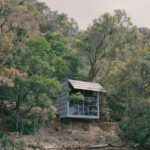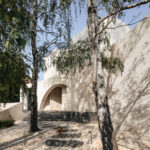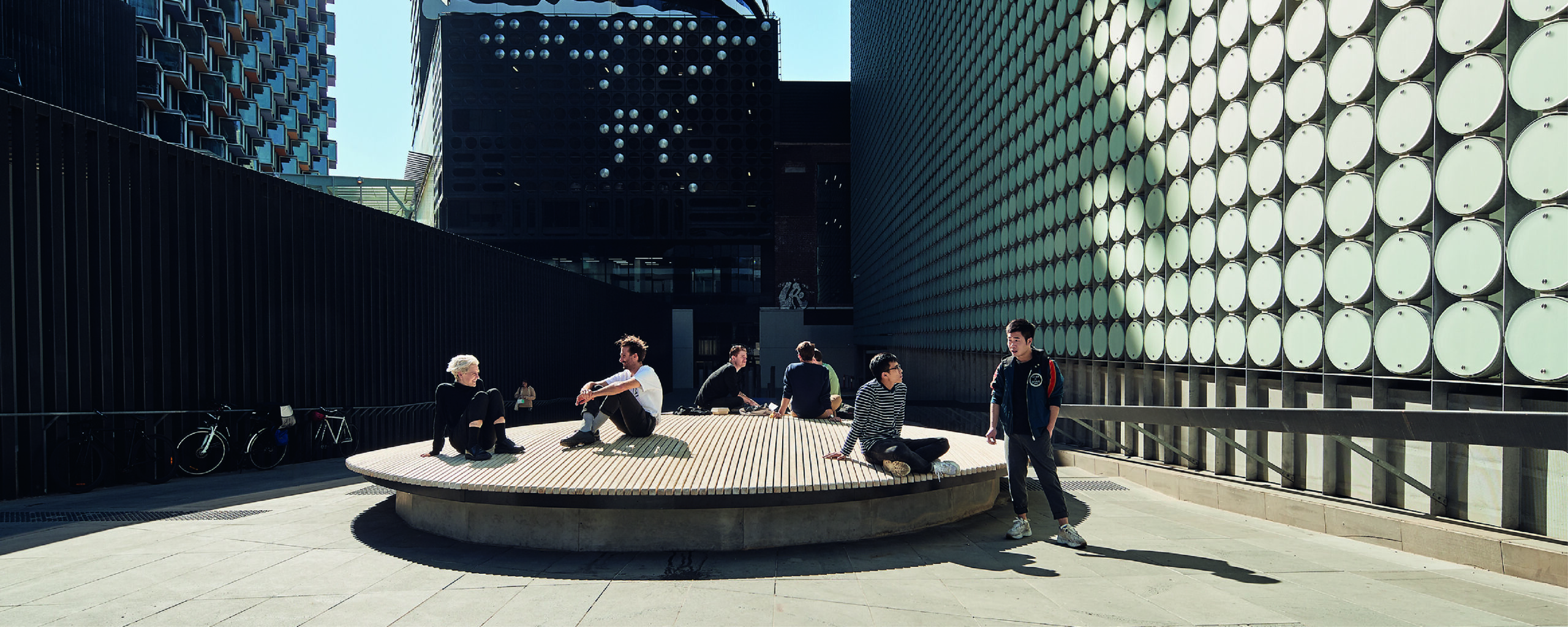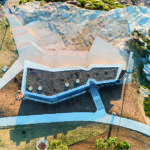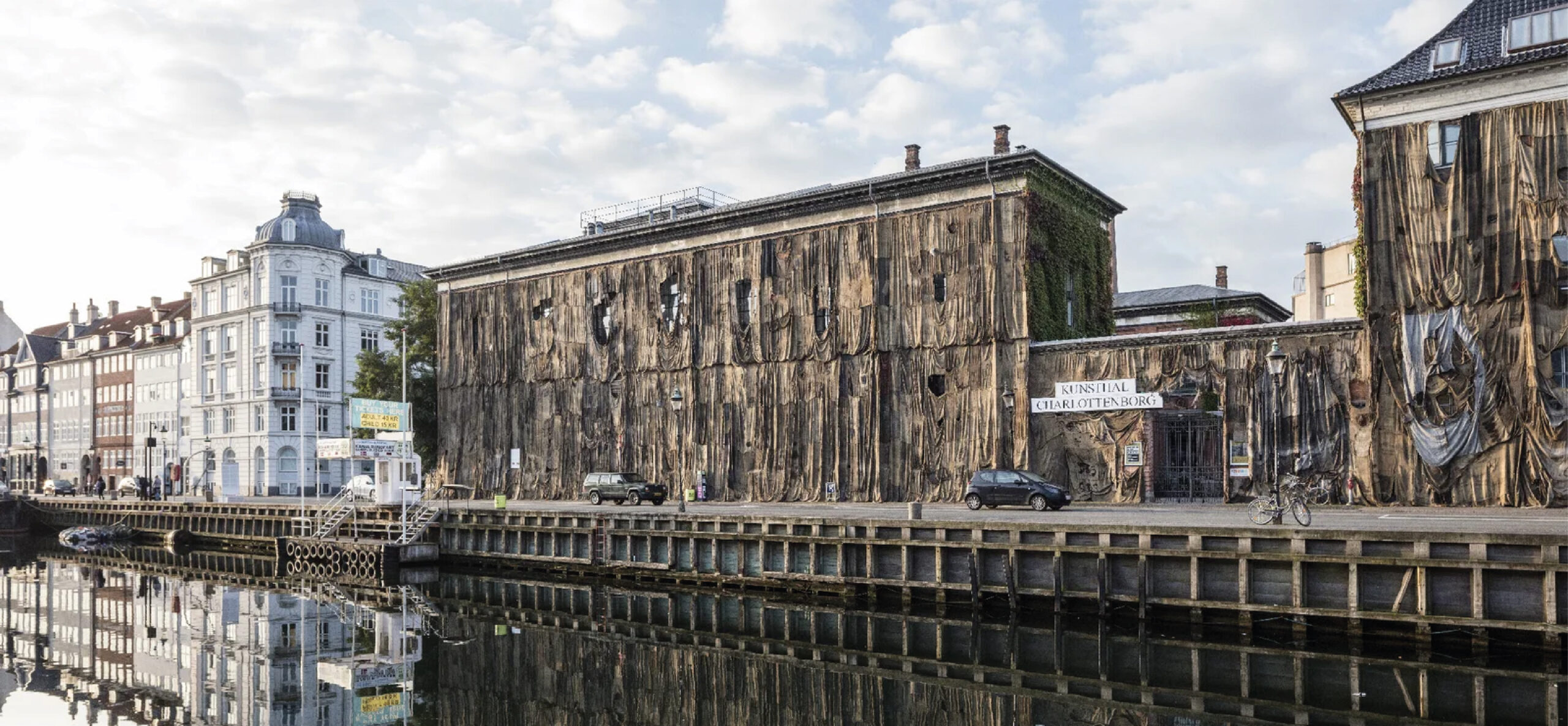
Ibrahim Mahama
Ibrahim Mahama is a Ghanian artist. He often works with found objects, transforming them in his practice and giving them new meaning. Mahama is best known for his practice of draping buildings in old jute sacks, which he stitches together with a team of collaborators to create patchwork quilts. Of the practice, Mahama says, “I used jute sacks because for me the history of crisis and failure is absorbed into the material. Their history speaks of how global transactions and capitalist structures work. And because how their humbleness contrasts with the monumentality of the buildings they cover.” He grew up in a polygamous family, and once noted that his collaborative nature could be a result of this unique environment.

Born in Tamale, Ghana in 1987, Mahama received his MFA in Painting and Sculpture from the Kwame Nkrumah University of Science and Technology, in Kumasi, Ghana in 2013. He lives and works in Tamale. Mahama was the youngest artist featured in the first Ghana Pavilion at the 2019 Venice Biennale, where he created a bunker-like space made out of the mesh used to smoke fish and filled it with references to Ghana’s history. Mahama has had multiple solo installations in Accra and Kumasi, as well as solo exhibitions in Dublin, Michigan, and at White Cube in London.
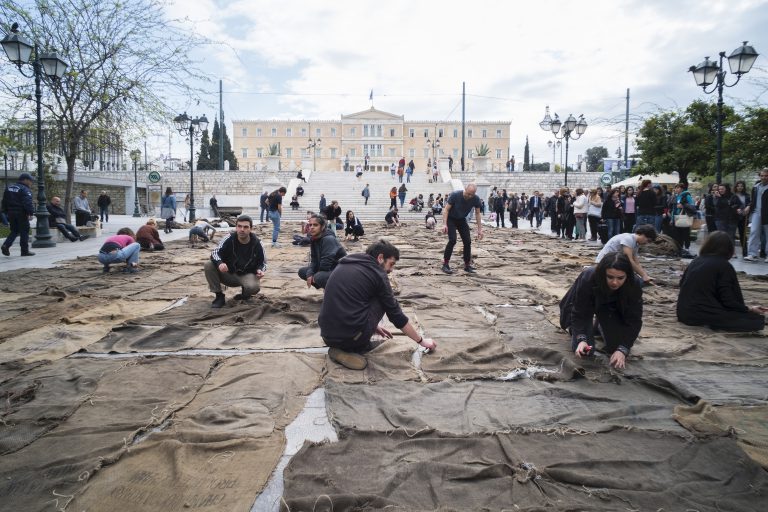
is an artist run project space, exhibition and research hub, cultural repository and artists’ residency. SCCA Tamale is an initiative of world-renowned Ghanaian artist, Ibrahim Mahama, as a contribution towards transforming the contemporary art scene in Ghana. The SCCA-Tamale team intends, with its diverse programming and research interests, to spotlight significant moments in Ghanaian and international art in a communal space. Affiliated to blaxTARLINES KUMASI, the Centre is operated by committed, dedicated and generous persons who produce critical discourse that will eventually be disseminated through exhibitions, publications and allied activities. SCCA-Tamale is dedicated to art and cultural practices which emerged in the 20th Century and inspire generations of artists and thinkers of the 21st Century and beyond.
published in : artnet.com
Last Posts

Chandon Australia by Foolscap Studio

LINA Architecture Platform Program

IN BED Armadale Store by Flack Studio

Host House by Splinter Society Architecture

Thomson House by C.Kairouz Architects

Hyde Park House / Robeson Architects
Ibrahim Mahama
“I used jute sacks because for me the history of crisis and failure is absorbed into the material. Their history speaks of how global transactions and capitalist structures work. And because how their humbleness contrasts with the monumentality of the buildings they cover.”





